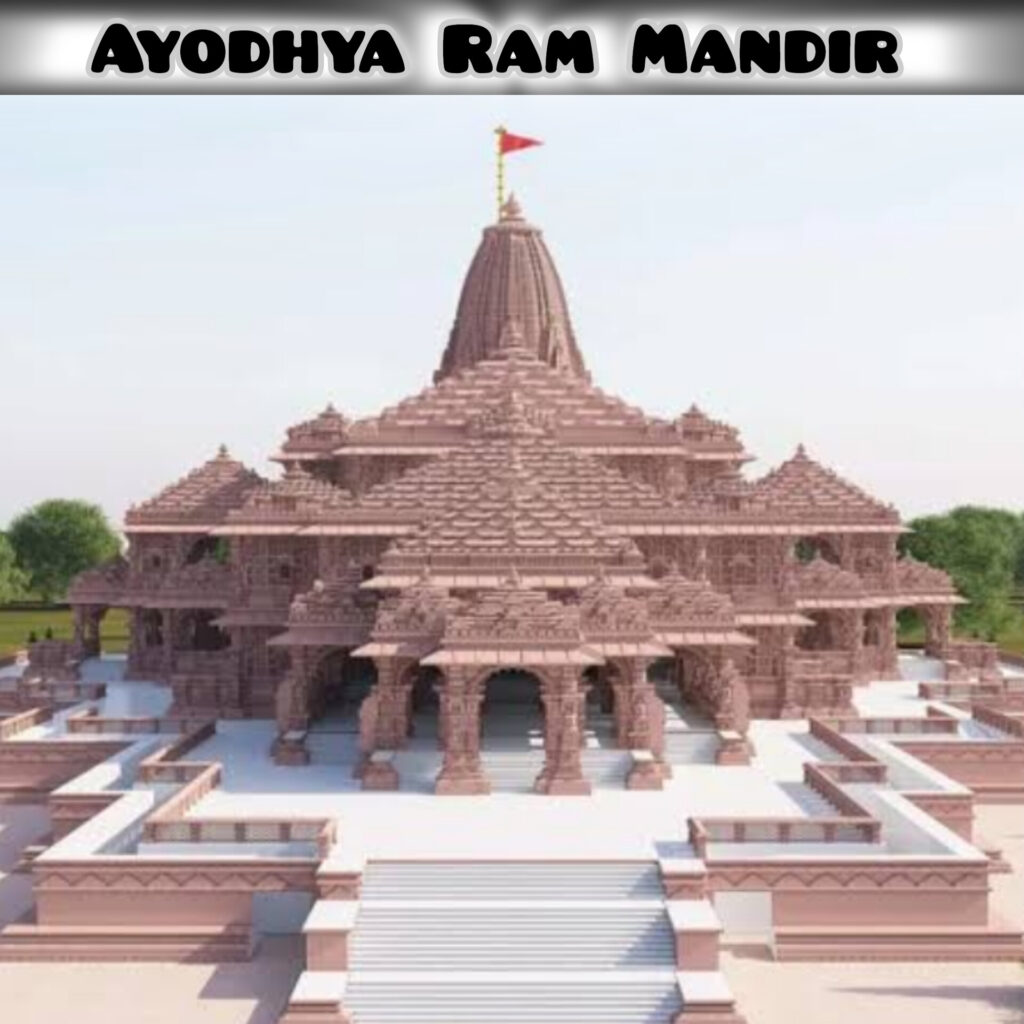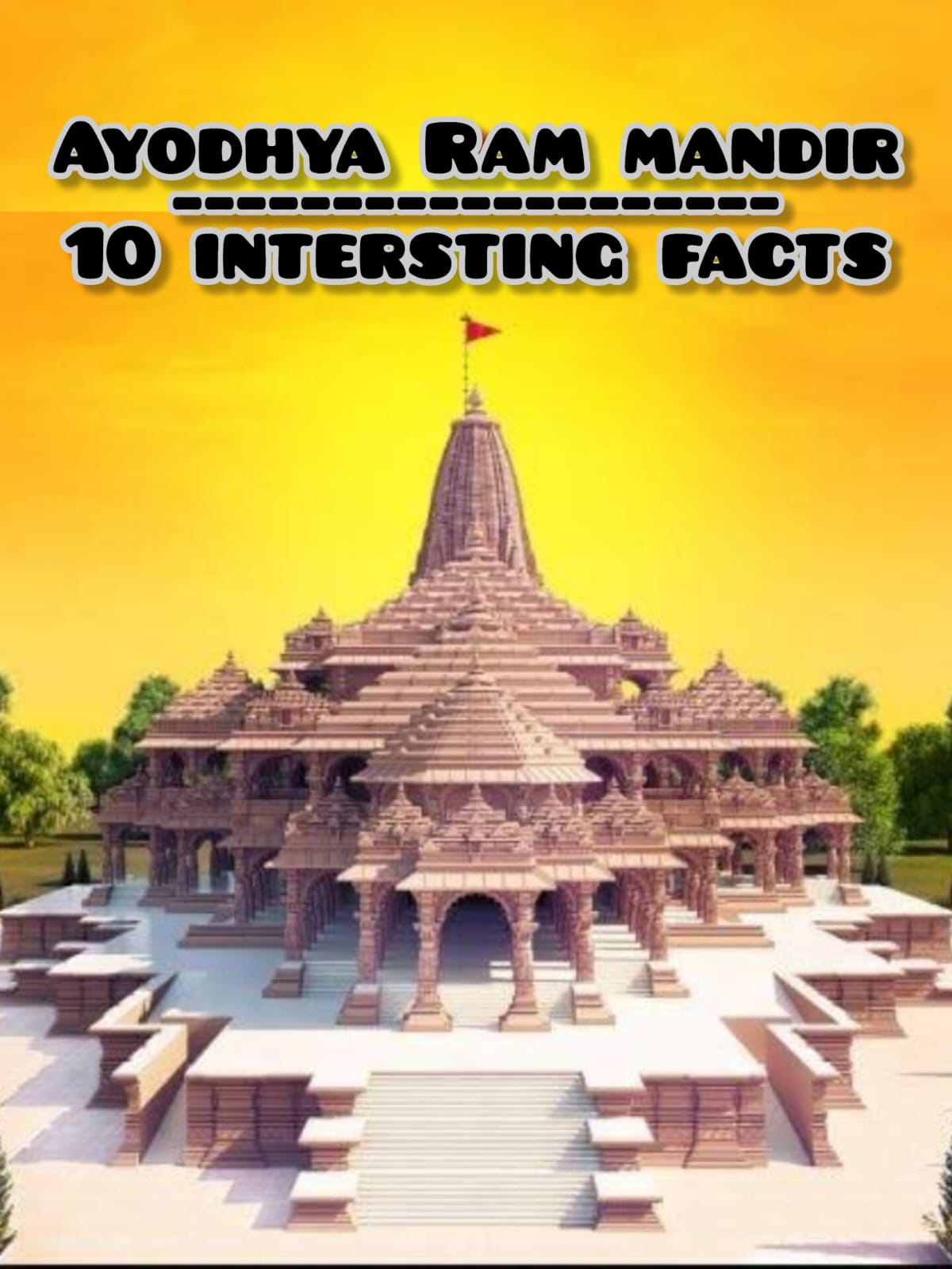
Ayodhya, the birthplace of Prabhu Shri Ram, is a city rich in history, mythology, and spiritual power. Saket and Kosala are other names for Ayodhya. Ayodhya inspired the towns of Ayutthaya in Thailand and Yogyakarta in Indonesia. Ayodhya, which is located along the banks of the sacred river Saryu, holds a significant role in Hinduism, with temples such as Hanuman Garhi and Kanak Bhavan attracting millions of people each year.
Ten Interesting Facts about Ayodhya Ram Mandir :
Ayodhya Ram Mandir: A Tapestry of Devotion and Heritage
Ayodhya, located in Uttar Pradesh, stands as a tribute to time, with its roots profoundly linked to history. The city, revered as Lord Rama’s birthplace, has a rich historical past that has evolved into a significant pilgrimage site over the years.
Sacred Birthplace:
The Ram Mandir’s meticulous planning and construction are based on the exact location where Hindu tradition believes Lord Rama, the seventh avatar of Lord Vishnu, breathed his first breath. This concept has become integrated into the region’s cultural fabric and has been passed down through generations.
City of Spiritual Splendor:
In addition to the Ram Mandir, Ayodhya is known as the “City of Temples.” The city’s religious architecture generates a spiritual environment that draws pilgrims and tourists alike to experience its holy essence.
Ramayana’s Heartbeat:
Ayodhya is the epic Ramayana’s beating heart, recounting Lord Rama’s life journey, exile, the kidnapping of Sita, and triumphant homecoming after conquering the evil king Ravana. The city, steeped in the Ramayana, reverberates with echoes of this immortal story.
Embodiment of Virtue:
The Ramayana not only describes Lord Rama’s heavenly character but also his devotion to dharma and unrivaled valor. As the setting for these stories of virtue, Ayodhya becomes a sacred location encapsulating these timeless virtues.
Building Devotion:
The Ram Mandir’s continuous construction is a modern-day pilgrimage a collaborative effort powered by passion and devotion. It is a monument to Lord Rama’s disciples’ oneness, translating faith into actual bricks and mortar.
Architectural Symphony:
The Ayodhya Ram Mandir, designed by the famed Sompura family, the architects behind many notable temples, is poised to be an architectural masterpiece. Its majesty and precise intricacies demonstrate a beautiful fusion of creative vision and traditional architectural prowess.
Tradition Materials:
The deliberate avoidance of iron and steel from the construction process is consistent with historical building methods. Using materials such as copper, white cement, and wood not only represents ancient building practices but also demonstrates a dedication to sustainability.
Sanctified Bricks:
The use of “Ram Shilas,” or bricks with the inscription “Shri Ram,” gives a layer of holiness to the structure. These bricks, some of which have been in place for more than three decades, bridge the chronological divide, connecting the current building to the historical tapestry.
Narrative Architecture:
The Ram Mandir in Ayodhya is an earthquake-resistant three-story edifice with around 390 pillars and 45 entrances. The doors are gold-plated and composed of teakwood. The temple is thought to be about 2,500 years old. The stages of Lord Rama’s heavenly pilgrimage can be traversed by devotees, providing a spiritual voyage within the architectural masterpiece. With the Ram Mandir, Ayodhya becomes a living monument to the meeting of tradition and devotion.
A Spiritual Journey: For Lord Ram
A visit to Ayodhya transcends the physical realm, pulsating with spiritual energy, especially at the Ram Janmabhoomi site. Whether a devout Hindu or someone seeking a deeper understanding of Indian culture, Ayodhya offers a unique and enriching experience.
According to the Shri Ram Janambhoomi Teerth Kshetra Trust overseeing the temple’s construction, it is anticipated to be open to all devotees by January 2024, with construction progress reaching 60%. For followers of Prabhu Shriram, Ayodhya holds significant importance, representing his principles and ideals.
Inspired by Prabhu ShriRam’s life, a brand named Prabhu Shriram – India’s Best Agarbatti and Dhoop, follows the path of his teachings. Their flagship product, “The Shripad Ramayana Series” Divine Box, showcases the ten life events of Prabhu Shriram through Madhubani Paintings, aiming to integrate the ethos of Ramayana into its products and convey the message of Indian values.

